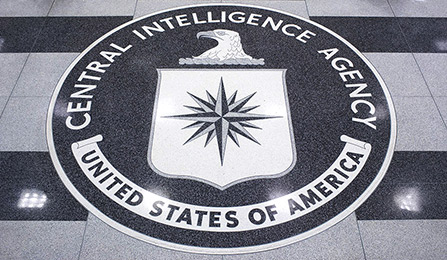
Background
The CIA evokes images of clandestine activity, spies hiding in corners and covert overthrow of unfriendly government regimes. However, when Truman established the organization in 1947, he envisioned something much different -- a sort of daily newspaper, informing him of developments around the world that could impact American policy. Yet even during Truman’s own presidency, the CIA did evolve to become much more than a news agency for the President as covert operations began in earnest early in the agency’s history.
The CIA grew out of a wartime agency, the Office of Strategic Services (OSS), which was established to help win World War II. From the onset, the OSS was intended to be a temporary agency with plans to dissolve it upon the end of the War. However, as tensions grew with the Soviet Union, many within the OSS were determined to keep it intact. By the end of the war, it was clear a Cold War was emerging, and Americans were “behind the game” with intelligence gathering, unlike the Russians, who’d been engaging in covert operations for years. While a need for intelligence was clear, debate raged over the role of this agency, as well as who would govern it and how it would be funded. Finding a leader was difficult as well. Military leaders strongly objected to former OSS officials taking the lead, noting “There were the men who’d slept through Pearl Harbor.” However, should the agency be civilian-led, all major decisions and funding, in order to be consistent with American democracy, would need approval from Congress. This could be problematic for a secret agency.
The establishment of the CIA as we know it did not appear overnight. It was the product of debates among military, state and defense leaders, with input from the public, thanks to key leaks that took the issue to the newspapers. Coming off of World War II (and the defeat of a totalitarian Nazi regime), many Americans feared our own government would become what we just had defeated. Truman himself had similar concerns, but as the Cold War heated up, he became more open to its development. After much discussion and debate over structure, Truman finally signed the National Security Act in September 1947, which gave birth to the CIA.
While Truman had intended to establish an agency that correlated all intelligence and delivered reports to the President, he soon realized that under the Cold War structure, the agency would become more than that. Moreover, Americans who once had feared the establishment of such an agency began to embrace it as a necessary tool to winning the Cold War. Still, the establishment and use of the CIA, during the Truman administration and subsequent presidencies, remained a topic of controversy, begging the question of its role in a transparent democracy while facing a totalitarian rival in Soviet Russia.
Key Question
What is the role of a secret intelligence agency in a transparent democracy?
Materials
Documents to be examined:
- Excerpt from Colonel Richard Park Jr. Report on the OSS
- William Donovan (Director of OSS) proposal for post-war intelligence agency outlined in memo to Mr. Harold D. Smith (Director of Bureau of the Budget), August 1945
- Telegram, George Kennan to James Byrnes, February 22, 1946 ("Long Telegram" excerpt)
- Correspondence from Paul A. Neuland, May 6, 1947, with attached newspaper articles
- Congressman Harold F. Youngblood, R-Detroit to Harry S. Truman, March 8, 1948, with attached petition reply from Matthew J. Connelly
- Telegram, Joseph McCarthy to Harry S. Truman, February 11, 1950, with Truman's draft reply
- Survey by the National Opinion Research Center, April 1950
- Central Intelligence Agency Report on Iranian Political Situation, October 12, 1951
- Excerpt from Rise to Globalism: American Foreign Policy since 1938 by historian Stephen Ambrose
- Interview with Harry S. Truman, 1961-62, from Plain Speaking: an Oral Biography of Harry S. Truman by Merle Miller